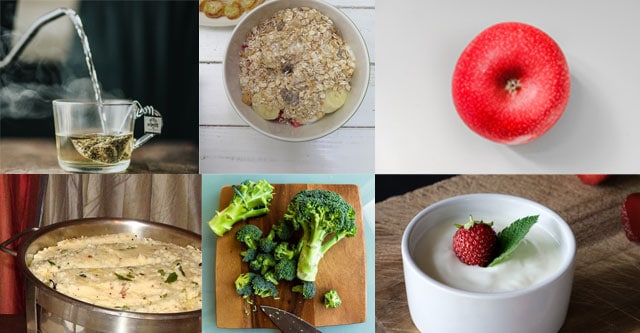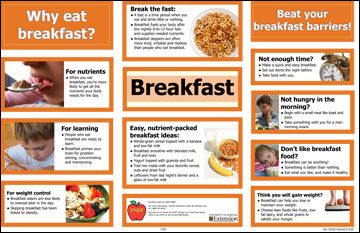
Alternatives to honey
There are many options for honey that are vegan-friendly. Some are whole-food based, while some are processed. Some can even be made at home. It is important to experiment to discover what tastes the best. Agave nectar, which is an alternative to honey, is the most well-known. This sugar substitute, which is derived from agave plants, tastes very similar honey. Maple syrup, which is also a popular vegan alternative, is not suitable as a raw vegan.
Coconut syrup is another vegan-friendly honey option. This dark, sweet honey substitute is naturally low-glycemic. However, it lacks nutrients and should not be consumed in excess. You can also use sorghum syrup as a sweetener, which is rich in nutrients. It is not readily available but it is an excellent option for vegans.
Honey has many health benefits
Vegans who wish to improve their health might want to try honey. Its health benefits are well-known. Not only is it naturally sweet, it is also rich in nutrients. Honey has been used in traditional medicine for centuries by many cultures. Honey is one of the oldest foods that humans have ever eaten.

Honey is rich in antioxidants, micronutrients, and amino acids. Honey is a healthy alternative to sugar due to its low glycemicindex. Heat treatment is used to preserve honey and increase its shelf-life. However, heat treatment can decrease the antioxidant content of honey and reduce its health benefits.
Alternatives to beeswax
When a vegan wants to create a beeswax-free candle, there are several vegan alternatives available. First, the Candelilla flower. This natural wax is compatible with all other waxes, resins, and has a moderate melting point. It is completely natural and can be used vegan.
Coconut wax is another option. This wax can be difficult to find but it is often used in candles.
Alternatives for bee pollen
Bee pollen, which is made from animal products, can be used as a food supplement. It's beneficial for many reasons, including reducing the symptoms of seasonal allergies and aiding digestion. You can also add it to yogurt, cereal, and granola as a natural sugar substitute. It also helps relieve stress and is a popular supplement for those with rheumatoid arthritis.

There are also a number of health concerns with bee pollen. According to FDA, pollen products that have been tainted can cause diarrhea, heart problems, and elevated blood pressure. Also, pregnant women should not consume pollen.
Beekeeping practices making bee honey not suitable for vegans
Vegans avoid honey and other animal products. The practices of many beekeepers aren't suitable for vegans. One example is the killing of bees and another, or building new hives. These practices can be harmful, but they are still considered exploitative by many vegans.
While it may seem that more bees are better for the environment, bees cannot produce fruit, flowers, or seeds without their help. This is exacerbated by the fact that large honeybee colonies often monopolize food sources, crowding out other pollinators and reducing the biodiversity of ecosystems. Beekeepers may use smoke or chemical combinations that are objectionable to vegans.
FAQ
What does it take to make an antibiotic work?
Antibiotics kill harmful bacteria. To treat bacterial infections, antibiotics are used. There are many different types of antibiotics. Some can either be administered orally, while others may be injected. Other antibiotics can also be applied topically.
Many people who have been exposed can be prescribed antibiotics. For example, if someone has had chicken pox, he or she might take an oral antibiotic to prevent shingles later on. For those with strep-thorphritis, an injection of penicillin could be given to prevent them from getting pneumonia.
Children should not be given antibiotics without the consent of a doctor. Children are at greater risk than adults for developing serious side effects from taking antibiotics.
Diarrhea, the most common side-effect of antibiotics, is probably diarrhea. Other side effects include dizziness, nausea and vomiting, dizziness, stomach cramps, dizziness, allergic reactions, dizziness, dizziness, stomach cramps, diarrhea, nausea, vomiting, allergy, headaches, dizziness, dizziness, dizziness, stomach cramps, and stomach cramps. These symptoms usually go away after treatment ends.
Is it possible to have a weak immune system due to being cold?
Cold can make you less immune to infection because your body makes fewer white blood cells, which are essential for fighting infections. However, being cold also makes you feel better because your body releases endorphins into your brain which reduce pain.
Why should we live a healthy existence?
Having a healthy lifestyle helps us live longer, happier lives. Regular exercise, healthy eating habits, healthy sleep habits and stress management can all help prevent strokes, heart disease, diabetes, and cancer.
By living a healthy lifestyle, we can improve our mental health. It will make us more resilient to everyday stress. A healthy lifestyle can also help you feel and look younger.
What are 10 healthy habits?
-
Every day, eat breakfast.
-
Don't skip meals.
-
Eat a balanced, healthy diet.
-
Get lots of water.
-
Take care of your body.
-
Get enough sleep.
-
Avoid junk food.
-
Daily exercise
-
Have fun
-
Make new friends
Statistics
- nutrients.[17]X Research sourceWhole grains to try include: 100% whole wheat pasta and bread, brown rice, whole grain oats, farro, millet, quinoa, and barley. (wikihow.com)
- WHO recommends consuming less than 5% of total energy intake for additional health benefits. (who.int)
- WHO recommends reducing saturated fats to less than 10% of total energy intake; reducing trans-fats to less than 1% of total energy intake; and replacing both saturated fats and trans-fats to unsaturated fats. (who.int)
- According to the Physical Activity Guidelines for Americans, we should strive for at least 150 minutes of moderate intensity activity each week (54Trusted Source Smoking, harmful use of drugs, and alcohol abuse can all seriously negatively affect your health. (healthline.com)
External Links
How To
What does "vitamin" actually mean?
Vitamins can be described as organic compounds found in food. Vitamins help us absorb nutrients in the foods we consume. Vitamins cannot come from the body so food must provide them.
Two types of vitamins exist: water soluble and oil soluble. Water-soluble vitamins dissolve in water easily. Vitamin C,B1(thiamine), B2 (2riboflavin), and B3 (3niacin), as well as vitamin C,B1, B2 (riboflavin), and B3 (niacin), vitamin B6 (pyridoxine), vitamin folic acid (biotin), pantothenic, and choline are examples. The liver and fatty tissues are home to fat-soluble vitamins. These include vitamin D, E and K, as well as beta carotene.
Vitamins are classified according to their biological activity. There are eight major vitamin groups:
-
A - Vital for healthy growth.
-
C - essential for proper nerve function, and energy production.
-
D – Essential for healthy teeth, bones and joints
-
E is needed for good reproduction and vision.
-
K - required for healthy muscles and nerves.
-
P - vital for building strong bones andteeth.
-
Q - aids digestion and absorption of iron.
-
R - Red blood cells are made from red blood cells.
The recommended daily intake (RDA), of vitamins varies with age, gender and physical conditions. The U.S. Food and Drug Administration has established the RDA values.
For adults over 19 years, the RDA is 400 mg per day for vitamin A. Because it is essential for the development of the fetus, pregnant women should consume 600 micrograms per days. Children ages 1-8 require 900 micrograms per day. Children under 1 year old require 700 micrograms daily, while infants over one year old need 500 micrograms every day. This decreases between 9 and 12 months.
Children aged 1-18 require 800 micrograms of sugar per day, while those who weigh more than 1200 need 1000. For their nutritional needs, underweight children need 1200 mg per day.
Children 4-8 years old with anemia will need 2200 mg of vitamin D daily.
2000 micrograms are required daily for good health in adults over 50. Due to their increased nutrient needs, pregnant and breastfeeding women need 3000 micrograms daily.
Adults over 70 need 1500 micrograms daily, since they lose around 10% of their muscle mass every decade.
Women who are pregnant or lactating need more than the RDA. Pregnant mothers need 4000 micrograms per daily during pregnancy and 2500 after giving birth. Breastfeeding mothers require 5000 micrograms daily when breast milk production is occurring.